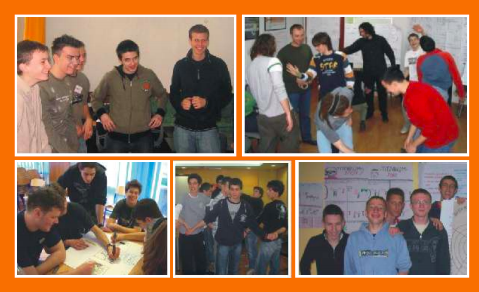Exploring Dimensions of Masculinity and Violence

This report outlines findings from a participatory learning and action project conducted by the Western Balkan Gender-Based Violence Prevention Initiative funded by the International Center for Research on Women and Care International. It also contains recommendations for education modules to be facilitated for young men to explore notions of masculinity and its’ relationship to violence, particularly gender based violence. Discussion items include: exploring youth culture, gender norms, socialization of masculinity, power and influence, attitudes about violence, root causes and consequences of violence, exploring transition from boyhood to manhood, and moving toward change.
The research is based on the hypothesis that “by addressing personal attitudes about gender equity and a broader definition of sexuality for men, there will be positive effects on a range of cognitive, behavioral and health outcomes for both specific gender norms and expectations that contribute to violent behavior among young men.”
Three main objectives guiding the project were:
- Objective 1: To determine the specific gender norms and expectations that contribute to violent behavior among young men in Bosnia, Croatia, Montenegro and Serbia;
- Objective 2: To design interventions most effective at reducing levels of violence and increasing gender-equitable behaviors; and
- Objective 3: To evaluate the effect of the interventions in reducing violence and increasing equitable behaviors.
The participatory learning and action plan was developed based on five key research questions:
- What are the current social constructs, attitudes and experiences of young men, especially with regard to hegemonic masculinity?
- How do social institutions such as media, school, religion, family and peers influence social constructs of masculinity?
- What is the range of young men’s attitudes and behaviors toward women and their relationships with women?
- How are social constructs of masculinity related to men’s violent use of power?
- For men who don’t use violence, what are the influencing factors and consequences?
This report offers insight and implications for designing programs that engage young men in discussion around creating alternative definitions of masculinity and constructing new norms that may ultimately reduce gender based violence.
Consider using discussion points and exercises from the PLA Guide as foundation for focus groups of young men or as a supplement to other curricula designed to engage young men.
The use and the dissemination of ICRW's publications for non-commercial, educational purposes is permitted. Portions may be reproduced with acknowledgment to the International Center for Research on Women (ICRW). For questions, please contact publications@icrw.org.

